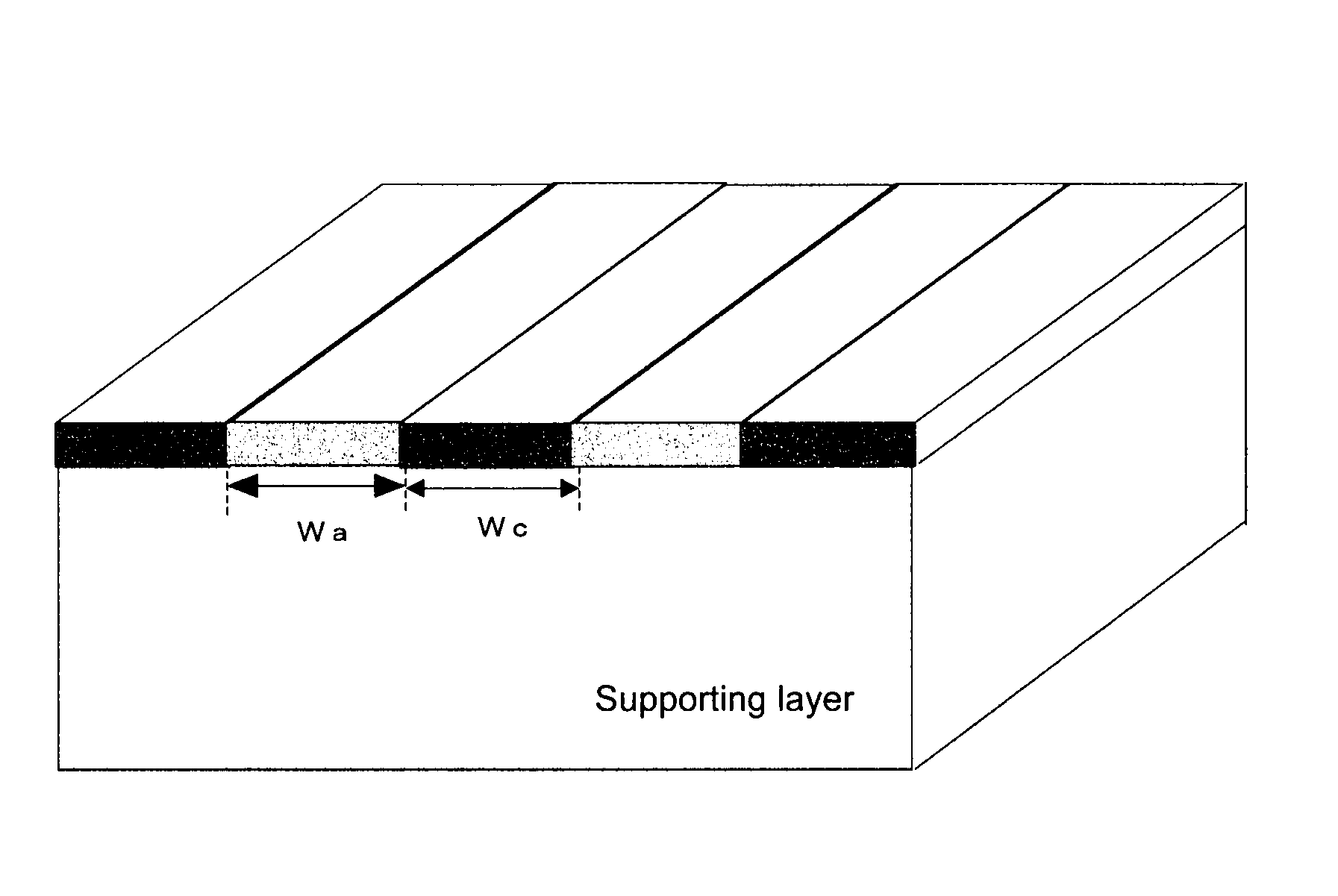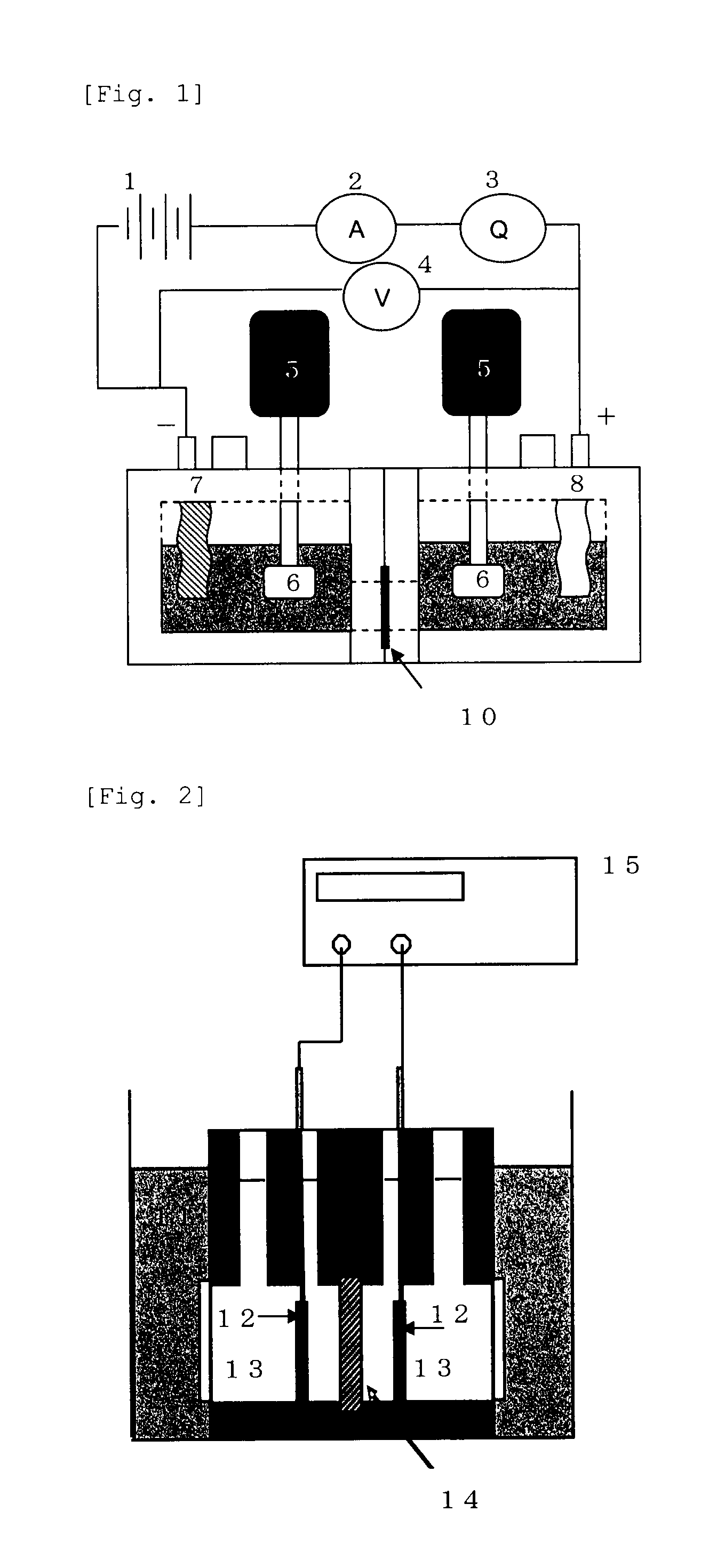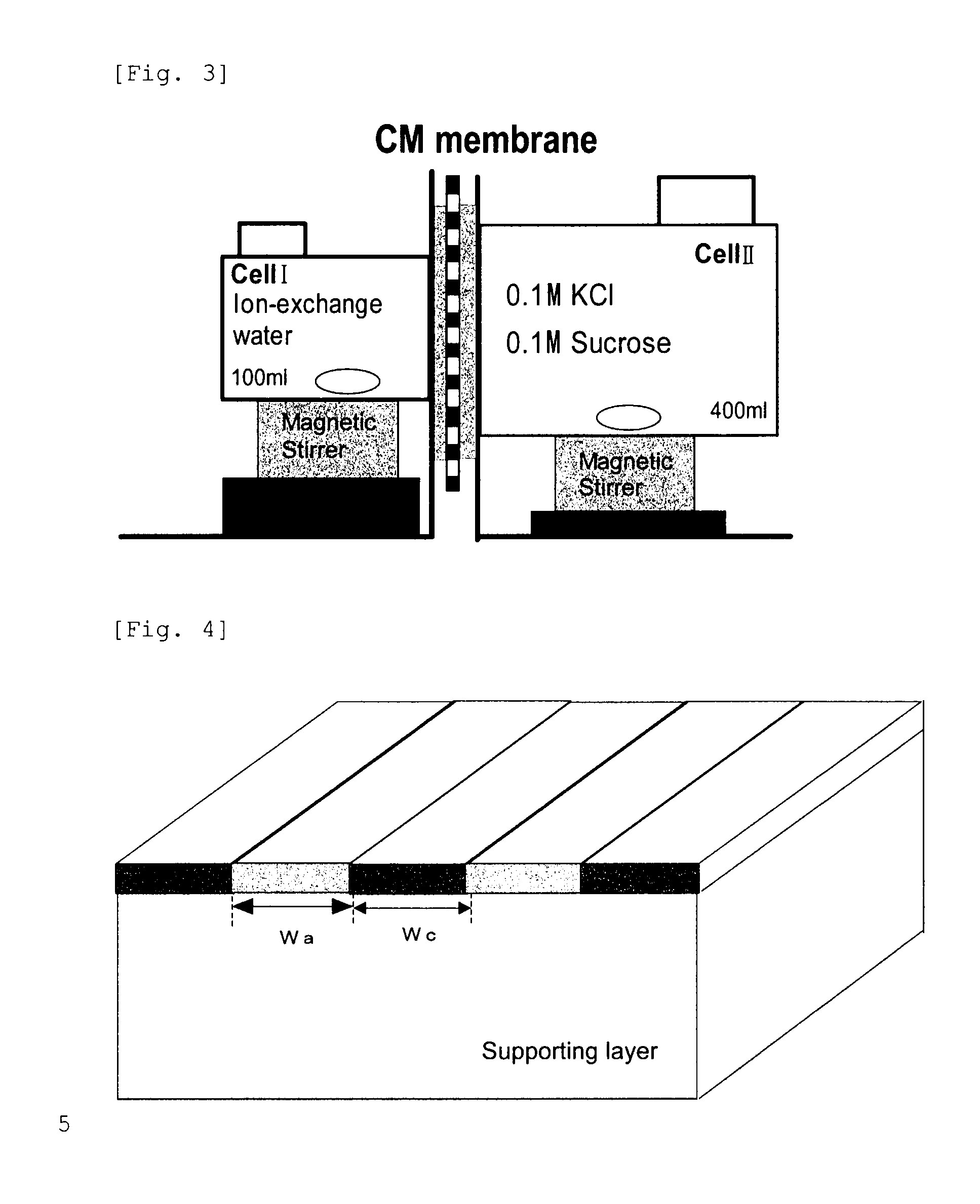Ion-exchange membrane and method for producing same
a technology of ion exchange membrane and ion-exchange membrane, which is applied in the direction of membranes, filtration separation, separation processes, etc., can solve the problems of advanced technology and troublesome manufacturing steps, deterioration of membrane performance, and increase of electric resistance of ion-exchange membrane (membrane resistance), etc., to achieve excellent anti-organic fouling, long-term stable electrodialysis, and low membrane resistance
- Summary
- Abstract
- Description
- Claims
- Application Information
AI Technical Summary
Benefits of technology
Problems solved by technology
Method used
Image
Examples
example 1
Production of an Ion-Exchange Membrane
[0156]In a 200 mL Erlenmeyer flask were charged 90 mL of deionized water and then 22.5 g of the cationic polymer P-1, and then the mixture was heated in a water bath at 95° C., to dissolve the polymer P-1. Then, to the mixture was added deionized water to prepare an aqueous solution of the polymer at a concentration of 8%. A viscosity was 15 mPa·s (20° C.). This aqueous solution was charged in a syringe, which was then mounted to an ink-jet printer “NanoPrinter 1100D” from Microjet Corporation. The solution was applied on a 5 cm×5 cm area on a vinylone synthetic paper (basis weight: 50±5 g / m2, thickness: 160±25 μm) as a supporting layer, by solid printing using the above ink-jet printer. Then, the product was dried at 25° C. under a 65% RH atmosphere for 16 hours. Then, the product was pressed by a hot press under the conditions of a temperature of 150° C. and a pressure of 10 kgf / cm2 for 10 min. The film thus obtained was annealed at 170° C. fo...
example 2
[0158]An ion-exchange membrane was produced and evaluated as described in Example 1, except that 25.4 g of the cationic polymer P-2 was used in place of 22.5 g of the cationic polymer P-1, an aqueous solution of a polymer at a concentration of 21% was prepared by adding deionized water, and a screen printer was used in place of an ink-jet printer. The results obtained are shown in Table 4. Here, the screen printer was LS-34TV from Newlong Seimitsu Kogyo Co., Ltd. The aqueous solution had a viscosity of 98000 mPa·s (20° C.).
example 3
[0159]An ion-exchange membrane was produced and evaluated as described in Example 1, except that 15.8 g of the cationic polymer P-2 was used in place of 22.5 g of the cationic polymer P-1, a 12% aqueous polymer solution was prepared by adding deionized water, and a dispenser printer was used in place of an ink-jet printer. The results obtained are shown in Table 4. Here, the dispenser printer was “SHOTMASTER500” from Musashi Engineering, Inc. The aqueous solution had a viscosity of 2000 mPa·s (20° C.).
PUM
| Property | Measurement | Unit |
|---|---|---|
| domain sizes | aaaaa | aaaaa |
| thickness | aaaaa | aaaaa |
| pore size | aaaaa | aaaaa |
Abstract
Description
Claims
Application Information
 Login to View More
Login to View More - R&D
- Intellectual Property
- Life Sciences
- Materials
- Tech Scout
- Unparalleled Data Quality
- Higher Quality Content
- 60% Fewer Hallucinations
Browse by: Latest US Patents, China's latest patents, Technical Efficacy Thesaurus, Application Domain, Technology Topic, Popular Technical Reports.
© 2025 PatSnap. All rights reserved.Legal|Privacy policy|Modern Slavery Act Transparency Statement|Sitemap|About US| Contact US: help@patsnap.com



